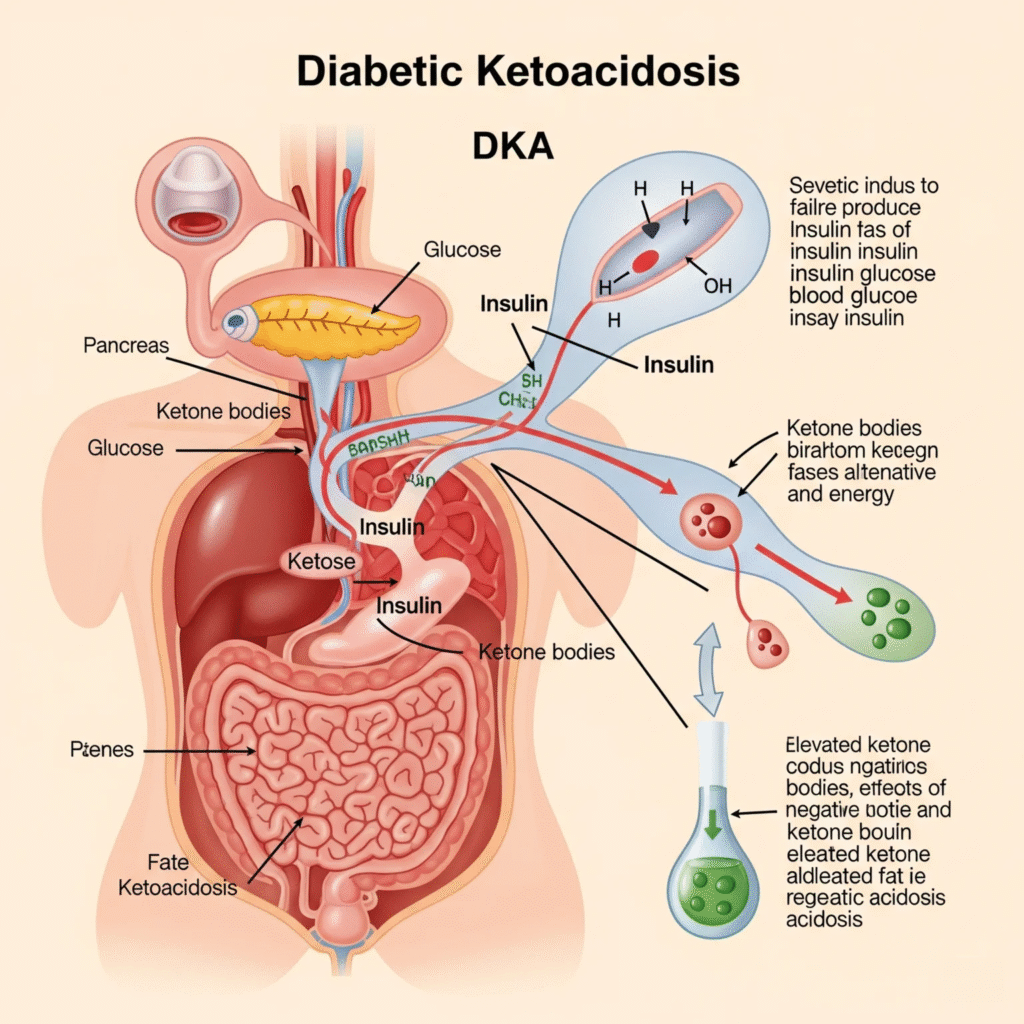
Diabetic Ketoacidosis Treatment
Diabetic retinopathy is a progressive microvascular complication of diabetes, primarily caused by prolonged hyperglycemia, which leads to structural and functional damage in the retinal blood vessels. If left untreated, it may result in irreversible vision loss or blindness. The primary goal of treatment is to delay the progression of the disease and minimize visual impairment.
In early stages, particularly mild to moderate non-proliferative diabetic retinopathy (NPDR), the emphasis remains on systemic control—achieving and maintaining optimal glycemic levels, blood pressure, and lipid profiles. This systemic approach helps reduce microvascular damage and slows the disease course. Regular fundoscopic evaluations by an ophthalmologist or retina specialist are essential, as early detection allows for timely therapeutic intervention.
In advanced stages, such as proliferative diabetic retinopathy (PDR), where neovascularization occurs, panretinal photocoagulation (PRP) laser therapy is typically employed to ablate ischemic retinal tissue and reduce vascular proliferation. In severe cases involving vitreous hemorrhage or tractional retinal detachment, a pars plana vitrectomy may be necessary to remove hemorrhagic material, relieve traction, and preserve visual function.
Long-term outcomes heavily rely on patient compliance with systemic disease management and follow-up care. Comprehensive diabetic eye care plays a vital role in preserving vision and improving quality of life in diabetic patients.
